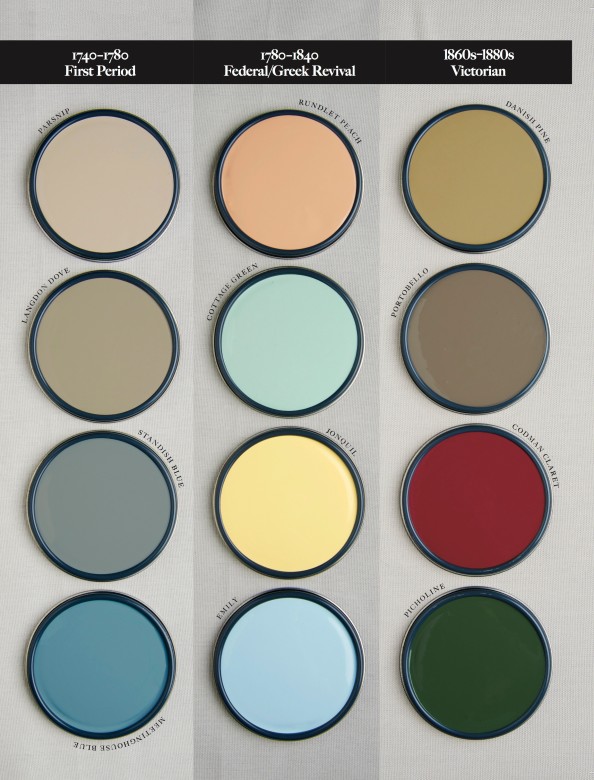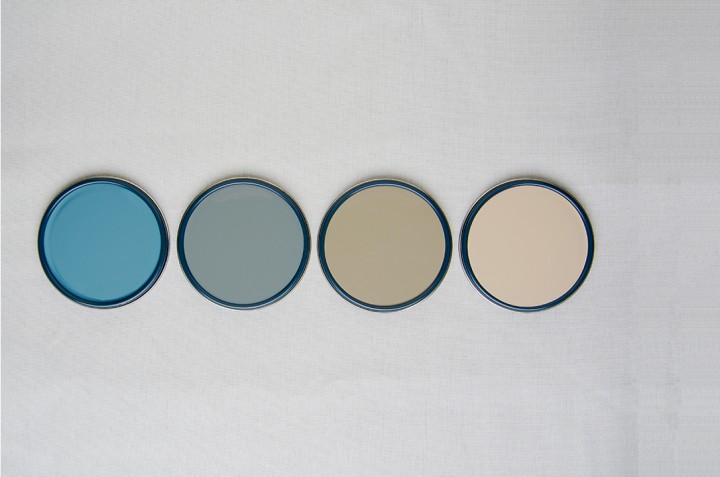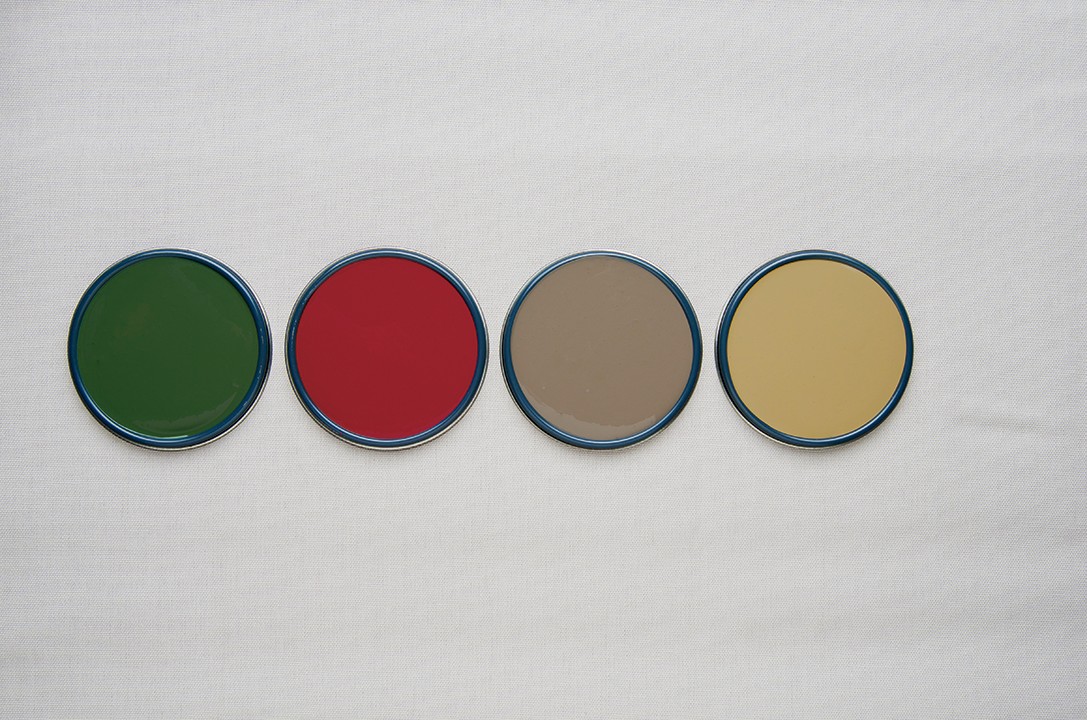What Should You Paint A New Englander Home
Despite its Puritan underpinnings, New England's first years were not colorless. Yep, the earliest homes often went without a coat of pigment, only hidden in the dirt floors of those humble structures was a hint of colorful things to come: minerals that would form the basis of early pigments. And past the 1800s, synthetic dyes would open a peacock's fan of bold choices for homeowners.
Much has changed since then. Where the bodies of houses once used to exist light, trimmed with dark, today the reverse is true. And yet we can't seem to permit become of the past. Every pigment company worth its palette has a "historic" collection, attesting to our ongoing fascination with catamenia color.

New England Historic Paint Colors | Shades of an Era
Melissa DiPalma
We asked Sally Zimmerman, senior preservation-services manager at Historic New England and co-writer of Painting Celebrated Exteriors, to take united states of america on a colorful journey through time.
About These Colors:
In 2010, Historic New England partnered with Andover, Mass.–based California Paints to pattern the Historic Colors of America collection, with 149 authentic shades used from the 1600s to 1895. All paint names mentioned in this story refer to that collection.
Guide to New England Historic Paint Colors

1740–1780 | Showtime Catamenia Colonial Paint Colors
Left to Right: Meetinghouse Blue, Standish Blueish, Langdon Pigeon, Parsnip
Melissa DiPalma
1740–1780 | FIRST PERIOD COLONIAL HISTORIC PAINT COLORS
Colonial Exterior Historic Paint Colors: Many early houses were left unpainted to conditions the elements, Zimmerman says. If exterior color was used at all, it was often a simple xanthous ochre and atomic number 26 oxide (the "barn" red we know so well) mixed with white lead and linseed oil, and applied on site. Window sashes and trim were painted in lighter, contrasting colors. Sash windows (which slide up), though an comeback over earlier casement windows, had to exist painted to protect glazing putty from the atmospheric condition; otherwise the glass would fall out.
Colonial Interior Celebrated Paint Colors: Neutral "drabs." The colors of doves and oysters were popular, as were Prussian blues.

1780–1840 | Federal/Greek Revival Paint Colors
Left to Right: Emily, Jonquil, Cottage Green, Rundlet Peach
Melissa DiPalma
1780–1840 | FEDERAL/GREEK REVIVAL Historic Pigment COLORS
Federal/Greek Revival Exterior Historic Paint Colors: With American independence, colors went lighter, with the virtually mutual shades existence white and flossy white. Yet, these colors were quite different from today's "vivid" whites; the linseed oil used as a binder in early on oil paints lent a yellowish tint to the palest colors. Today, paint manufacturers use titanium dioxide to create pure-white shades, but that technique came into commercial use only in the 1920s. Trim tended to be light in color, often the same or nearly-same color every bit the siding. Nighttime colors, like black or dark green, were used for window sashes, doors, and shutters.
Federal/Greek Revival Interior Historic Paint Colors: Soft colors were all the rage, including peaches and brighter pastels in shades of light-green, yellowish, and bluish.

1860s–1880s | Victorian Paint Colors
Left to Right: Picholine, Codman Claret, Portobello, Danish Pine
Melissa DiPalma
1860s–1880s | VICTORIAN Celebrated Pigment COLORS
Victorian Outside Historic Paint Colors: After the Civil State of war, synthetics were introduced to the nascent paint industry, opening up a wider range of pigments and greater saturation. Colour was used to play upward exterior architectural elements, such equally columns, dentils, and cornices. Often three to five colors would be used on a unmarried house; for instance, chocolate-dark-brown trim paired with golden-yellowish siding and a brighter accent, such equally turquoise, on a porch ceiling. (Today's aesthetic oftentimes pairs lighter trim and sashes with a darker business firm color.)
Victorian Interior Historic Paint Colors: Rich, velvety clarets and deep, woodsy greens were fashionable novelties, while strong neutrals such as dark golden and warm dark-brown balanced decorated Victorian interiors.
Meet More than:
New England Architecture | Guide to Business firm Styles in New England
New England Historic Holiday Home Tours
Historic Downtown Salem | Fine art, Compages, and Attractions
Source: https://newengland.com/yankee-magazine/living/homes/history-new-england-house-colors/
Posted by: thompsonrearandeas.blogspot.com

0 Response to "What Should You Paint A New Englander Home"
Post a Comment